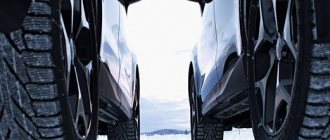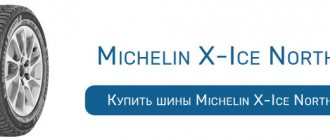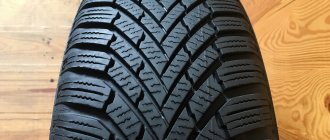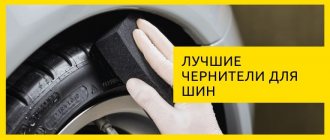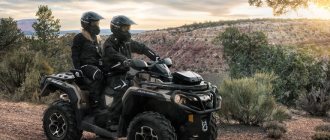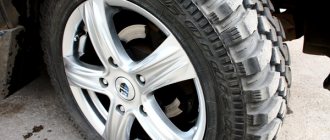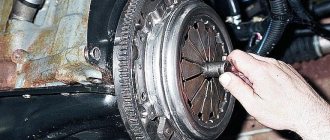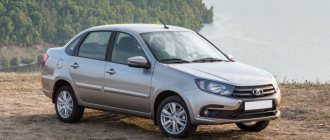Cold weather and wintry conditions affect how quickly and confidently your vehicle can travel on the road. And so that you don’t get lost among the huge variety of winter tires, and have time to purchase them at an adequate price, we have compiled a rating of studded winter tires for 2019-2020.
The review is based on the results of the 2019-2020 winter tire test conducted by the popular magazines Autoreview and Za Rulem.
How to choose winter tires, which ones are better
Studded tires. If you spend most of the winter driving on snow-cleared roads where ice forms, or on heavily packed (and thus slippery) surfaces, studded tires are a good choice. They are distinguished by the presence of studs, discharge grooves in the treads, and lamellas (small cuts) in the blocks.
Studless (friction) winter tires are divided into:
Scandinavian tires. In addition to the advantages inherent in studded tires, they do not damage the asphalt, since they do not have spikes and are very soft. But they have many lamellas and small discharge grooves.
All-season. Ideal for wet and warm winters, suitable for short trips on snowy roads. Not suitable for travel on ice and thick snow. These tires have a small number of grooves and sipes.
Central European. This type of tire is suitable for short-term use on icy or snowy asphalt and wet roads. There are slats, as well as large grooves for the fastest possible removal of snow and water.
For operation throughout Russia, it is recommended to opt for studded tires. An exception is possible only for the Southern Federal District.
Review of the best summer and winter tires
A good solution is to get two sets of tires. For winter it is better to buy studded ones. A good option for the summer would be the Michelin Latitude Sport 3 model. It has good stability regardless of the quality of the road surface and allows you to easily overcome even heavy mud.
Nokian Hakka Black has a relatively high price. However, compared to others, it performs well in the long term. Even with intensive driving, it can easily “live” for more than 5 years.
General Altimax Sport is a relatively inexpensive option for use in the warm season. Even at high speed, this tire model is practically inaudible. Allows you to easily move at speeds up to 190 km/h.
FULDA KRISTALL MONTERO 3 is distinguished by its unusual appearance. The deep tread and the presence of a large number of longitudinal grooves allow you to move through puddles at high speed. Hydroplaning is excluded.
PREMIORRI SOLAZO is a tire that allows you to move even in difficult road conditions without any special problems. The low weight of the tire saves fuel.
The choice of winter tires needs to be taken much more seriously. If you have a limited budget, the KAMA 505 “Irbis” would be a good solution. The protector deteriorates relatively quickly. However, this point is fully justified by the low cost of the model. Positioned as all-season.
Nokian Hakkapelitta 8 is a modern tire for passenger cars. It differs from its analogues in its reliability and maneuverability.
Nordmaster tires have an original tread pattern and a number of other important advantages. The presence of studs allows the driver to feel confident on asphalt and ice.
A distinctive feature of the TungaMaster is the presence of continuous ribs in the design. They provide a rigid, but at the same time easy ride of the car.
Atmel CordiantPolar is a classic solution with excellent technical characteristics. A good solution for winter. Reliable and inexpensive tires.
Using recommended tires is the key to safety on the road. It is important to monitor the condition of the tread and the level of pressure inside the wheels. This will avoid problems on the road and make the car easier to drive.
Source
Winter tire tests 2019-2020
Before being included on our list, winter tires have undergone a rigorous test. Ruthless and skilled testers tested numerous sets of winter tires, only a few of which made it to the finish line. That's how it was.
Winter tire test “Behind the wheel”
Za Rulem experts selected the top ten best tires from models from Western and Eastern manufacturers. In each category, 6 new sets of the most popular standard sizes were presented - 195/65 R15.
As in the case of Autoreview, the tests took place in Sweden, only not in March-April, but in mid-January. At this time, in the Swedish town of Arvidsjaur, which became the base for the testers, there were frosts (minus 7-14 degrees).
Tread pattern: which tires are best for winter in specific climatic conditions
It is not possible to produce universal rubber with excellent friction properties on any surface. By shifting the balance point in a certain direction, each manufacturer creates a whole range of winter tires with varying grip strength on snow, asphalt and ice. There are special ratings of winter tires that help the car owner choose the best “shoes” for his car. An easy-to-read tread pattern can indicate which winter tires are best to choose in each specific case without compromising full-fledged drive:
- V-shaped or wedge-shaped tread . Allows you to effectively combat the phenomenon of aquaplaning. The rubber copes well with porridge and snowy areas.
- Classic, slightly directional tread with longitudinal grooves . This geometry satisfactorily removes water from the contact patch and behaves well on dry asphalt.
- Asymmetrical tread . A compromise solution that combines the positive features of classic and wedge-shaped patterns. The combination process is not always successful, as a result of which snow-covered areas can become a real test for this tread.
A more detailed analysis of the design of the contact part of the product will help you finally figure out which tires are best to buy for the winter, depending on the climatic situation of a particular region:
- a large number of diamonds and other geometric shapes separated by wide grooves + their relatively large height (9-10 mm) guarantee 100% passability in snow-covered areas and predictable behavior on ice;
- hard middle, large and low (5-6 mm) geometric shapes with characteristic chamfers, located on the shoulder sides, indicate the ability to quickly move on dry and wet asphalt, slush (passability on snow and ice is satisfactory).
When deciding the question “which winter tire models are best to choose?” will place emphasis on a comprehensive analysis .
Rubber with a high speed index ( T, H, V – 190-240 km/h ) and a low tread height ( 5-6 mm ) is high-speed and cannot have good cross-country ability. Tires that confidently overcome snow drifts are often indexed with the letters R, Q (170, 160 km/h) and have a high tread with small densely laminated “checkers” separated by wide channels.
Standard tires
The original wheels also go with the original tires. Their standard designation is 175/70 R13 82T. Let's go through the decoding again:
- 175 is the width of the tire profile in mm;
- 70 – percentage ratio of tire width and profile height;
- R – rubber type, radial;
- 13 – tire radius in inches (select for the rim);
- 82 – maximum tire load, in this case it is 470 kg;
- T – maximum possible speed, equal to 190 km/h.
The manufacturer also recommends a 165 mm wide tire. The wheel size is 80R13. The load indicators are the same. This rubber is low-profile, single-layer steel cord breaker.
Tires should be selected according to the following criteria:
- Low-profile tires have a beneficial effect on vehicle handling, but in the event of impacts, the risk of damage to the chassis increases significantly.
- A profile that is too large, on the contrary, may not fit into the arch, which is why it will constantly wear out;
- Also, a non-standard profile height will affect the speedometer readings, because the length of the rim changes.
- When selecting large rims and tires, it is very important to maintain the correct bolt pattern and fit it all into the wheel arches accurately;
- If the tire has a low load, it may burst when hitting an obstacle if the vehicle is fully loaded.
Like any other car, the 7 is equipped with summer, winter and all-season tires. All-season tires, in principle, show good results, but they are inferior to summer and winter tires when compared under the conditions of their “native path”.
Therefore, it is recommended for any car owner to have 2 sets of tires for the cold and hot seasons of the year.
Characteristics of winter tires for VAZ 2107
A winter tire is distinguished by the fact that it is made of softer rubber, which does not allow it to harden in the cold. It has a higher tread.
Briefly about some models and manufacturers
An analysis of the test results to determine which tires are best for the winter, as well as reviews from the car owner, showed:
- the favorite of even the toughest tests is Michelin X Ice 3;
- Bridgestone strives to focus on confident movement on ice (only the Blizzak VRX friction tire has quite tolerable behavior on snow);
- Nokian is not going to make compromises in the Nordman family: Nordman 5 and 4 have a meager set of advantages that limit their scope of application;
- Kuhmo, when developing the I'Zen KW31 rubber, relies on grip properties with ice and relegated strength properties to the background;
- Hankook iCept iZ W606 and iPike RS W419 tires are a very worthy choice; on snow and ice they demonstrate exemplary properties inherent in expensive tires.
- Tires from Cordiant have a small set of decent characteristics: Winter Drive performs well only on asphalt, Polar SL performs well only on snow.
Winter tires for VAZ
Winter time requires motorists to prepare their cars for difficult weather conditions. A misconception is that in winter you can use all-season or summer tires. This type is technologically not intended for use in winter.
Many people believe that winter tires on a VAZ differ from summer tires only in the tread pattern. This is partly true, but the main difference lies not in the tread, but in the type of rubber itself. At low temperatures, rubber becomes hard and the quality of grip on the road surface decreases. The composition of winter tires is selected so that the material does not lose softness even in severe frost. This feature can explain why it is not recommended to use winter tires in summer; at positive temperatures, soft rubber will become even softer, which will complicate driving.
Often, owners consider it sufficient to install winter tires only on the drive axle, but this idea does not meet safety requirements, since the risk of skidding increases, traction forces are not balanced and there is a danger of maintaining straight-line motion when turning.
The best tires for VAZ cars
For those who are puzzled by the choice of the optimal tire option, the rating of winter tires for VAZ is interesting. There are several worthy model options for consumers with different financial capabilities.
Nokian Tires Hakkapeliitta 9
These studded tires, produced in the Russian Federation, can rightfully be on the list of worthy winter models.
The manufacturer produces models with a diameter of 14…21″, a profile width of 195…315 and a height of 35…70.
Tire advantages:
- road stability;
- good resistance to ruts and skids;
- a large number of spikes (two types);
- excellent car handling on snowy roads and ice crust;
- large area of contact with the road surface;
However, even these tires have some disadvantages:
- long braking distance on dry asphalt;
- excessive noise when driving on a dry asphalt road;
- due to the softness of the sidewall, poor resistance to impact loads;
- a large number of defective products.
Of course, not everyone will like the cost of tires (about 7.2...7.5 thousand rubles), but in this case the price/quality ratio seems optimal. For example, those choosing winter tires for Lada Vesta are advised to take a closer look at these products.
Continental Viking Contact 7
The size range of friction tires is represented by tires with diameters of 14…21″.
Model features:
- good behavior on an icy road (comparable to the handling of a car on studded tires);
- excellent stability on snowy and wet roads;
- softness (because of this, the rubber wears out faster);
- the protector does not provide good water drainage.
Why shouldn’t those who solve the problem take a closer look at this option, which winter tires for the VAZ 2114 are better?
Nokian Hakkapeliitta R3
The products of the Finnish concern have characteristics similar to the Continental VikingContact 7. Comfort and safety on the road, good grip on the road surface (very slightly worse than that of a competitor) and excellent handling in all weather conditions characterize these tires, produced with a diameter of 14...21 inches. Some noise from the tires does not cause any particular discomfort.
Of course, the cost of the tires (about 11.5 thousand rubles) can scare off a potential buyer. But as compensation, it is possible (when purchasing tires from official dealers of the manufacturer) to receive free tire fitting.
Tigar Winter
Winter tires with an interesting pattern (without studs) are available in diameters of 16…19″, width 215…255 and height 45…65.
They are distinguished by:
- budget;
- good balancing ability;
- excessive noise on asphalt surfaces;
- not very high ability to overcome snowdrifts.
Tire pressure
Car enthusiasts often ask the question: how long to pump tires and is it worth doing it for winter tires? In winter conditions, the pressure measured by the pressure gauge may be lower than it actually is. For example, an indicator of 1.7 atmospheres at a temperature of -8 degrees can be recorded by the device as 1.6 at a temperature of -20 degrees. A decrease in temperature causes a decrease in pressure.
Both low and high pressure create an incorrect contact patch, which reduces traction, and in winter this is especially fraught.
Which tire should I choose?
Marking of standard tires on VAZ 2107 is 175/70R13 82T.
“175” — tire profile width;
“70” - the ratio of parameters such as the height and width of the tire profile;
“R” is the designation for a radial tire (note that this is not a radius, as most people incorrectly believe);
“13” is the diameter of its landing (namely the diameter, not the radius);
“82” is the load capacity index, which indicates how much pressure can be applied to each tire;
"T" is the maximum speed at which this tire can be used.
When choosing tires for the summer, take into account the climatic conditions and characteristics of your place of residence. For example, if you live in a rainy climate with poor road surfaces, you might want to consider tires with tread and a good drainage system that quickly pushes out water, preventing the effect of hydroplaning. The latter is the worst thing that can happen to you on a wet track, the car glides along the track like a ship, while the driver completely loses control over the steering.
The tread pattern plays an important role; it determines how the tires will grip the road. If you live in places where the tracks are mostly wet, it is recommended to choose tires with an asymmetrical deep pattern. Often this type of tire contains the corresponding inscription “Rain”, which translated into “human” means “rain”; you can also often find the word “Aqua”, which is practically the same thing and is translated as “water”.
Features of choosing winter tires
Winter tires are available in two versions without studs or with studs, and both options are quite in demand.
For better traction, winter tires are additionally equipped with studs; it is difficult to unambiguously answer the question of which studded winter tires are better, since you need to take into account what goals you need to achieve when driving.
Some people need tires for driving on snow, compacted snow and ice, and therefore need to purchase tires with a large pattern that provides good cross-country ability. These include Cordiant Polar 175/70 R13.
For driving mainly around the city, you can generally get by with Velcro, but since snow is not always cleared from the streets in a timely manner, it is still better to purchase studded tires with a low-noise “pattern” NordMaster 175/70 R13.
TOP 10 summer tires for VAZ (Lada)
Choosing tires for a car is a standard procedure that requires a careful approach and close attention. The safety of the driver and passengers, as well as the durability of the wheels, depends on the correct choice of ramps. At the same time, choosing good tires for a VAZ is quite simple. In the abundance of offers on the modern market, individual manufacturers stand out, famous for the quality and reliability of their products.
Before determining the list of the best summer tires for VAZ, you should decide on the parameters and subtleties of choosing tire modifications.
Specifics of winter tires for VAZ 2107
Regardless of the engine modification, the wheel size is R13, only tire size 175/70 is suitable for such wheels. Of course, it is possible to switch from R13 to R14 tires, but there are few benefits in such a replacement, the car’s handling will improve slightly, and the possibility of disc deformation will increase significantly. The tire size for VAZ 2107 and 2106 is identical.
So which winter tires are better for the VAZ 2107, Velcro or studded? When asking this question, you need to remember that the car is rear-wheel drive, for this reason it is prone to slipping during the start and skidding when entering a turn. Considering these criteria, the best choice would be winter tires with studs.
If a tenon is lost, replacing the element with a new one is not practiced, since it is impossible to securely fasten the element in the old hole.
Unwelding.
The fact is that some ten years ago, when there was no such choice in terms of wheels and tires for the VAZ 2106, car enthusiasts made homemade (boiled) wheels. All Lada models lend themselves best to this type of tuning. Of course, they put boiled wheels on other car models, but we’re talking specifically about putting big wheels on a VAZ 2106. So. Unwelding is a disc with an increased rim width. Standard wheels have a width from 5J to 6.5J. Using welding, you can increase the thickness to 7j 8j and 10j. Along the way, a problem may arise that such tuned wheels will not fit into the wheel arches, especially if there are fender liners. However, many car enthusiasts know that this is not a problem; they can be rolled out or cut.
There are two ways to boil the disc:
— Welding a steel strip into the middle of the disk. — Welding two disks cut to width.
Please note, however, that only steel (stamped) discs are suitable for such operations. Alloy wheels may not withstand heat treatment and may crack. One more feature. When changing the rim width in order to fit larger wheels on a VAZ 2106, it is necessary to use non-standard tires. For example, you installed boiled 13-inch wheels, then you need to choose tires with a diameter of 14 inches; if the wheels are 14 inches, then install 15-inch tires accordingly. The wheels must be pumped 0.2-0.3 atmospheres less than normal. This creates the effect of a flat tire. The rubber “swallows” all small pebbles and pits, and as a result reduces the load on the axle and wheel bearing. Next, toe the front wheels minus 1 mm at the front, at which the wheels seem to be trying to converge. This will protect the front bearings from twisting and extend their service life.
I consider this type of tuning to be the most acceptable for VAZ 2106 owners. It does not require significant financial investments into our cars. Moreover, they already belong to the budget class. So why should we pay more?
Source korchim.ru
The operation of any car always raises many questions among owners. After all, the driver wants not only to fix all problems in a timely manner, but also to predict them. Especially many questions arise about the correct selection of tires and wheels for your car. Today, a huge number of different products are sold, and few people know how to choose the kit that is ideal for a car.

